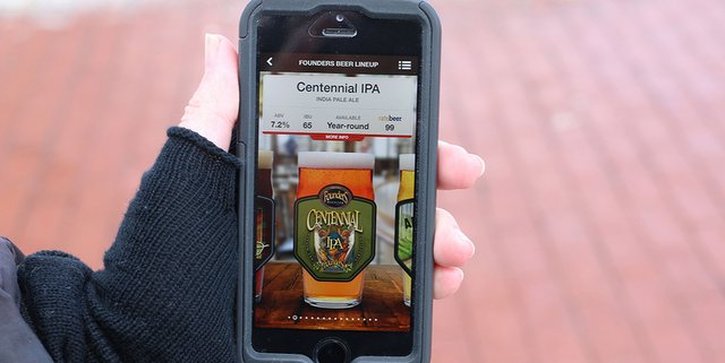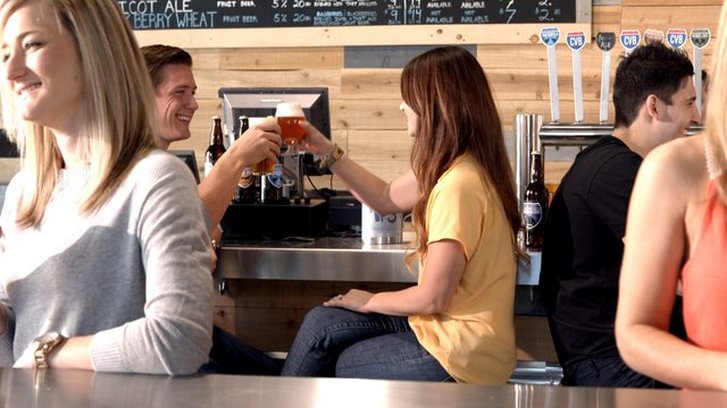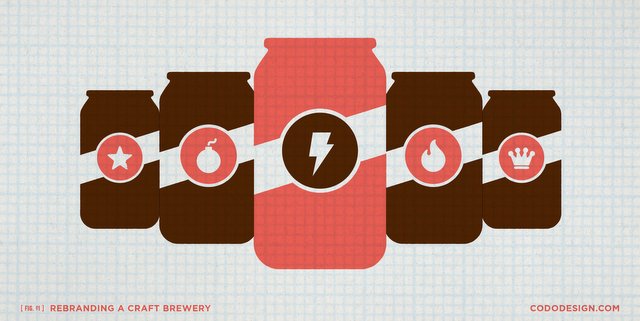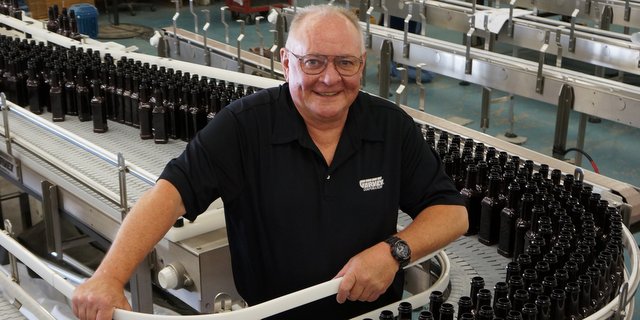|
by Curt Prins (originally found on www.craftbrewingbusiness.com) Craft brewing is exploding in America. You, faithful CBB readers, know this. Per the Brewers Association last month, Americans now enjoy beer from more than 3,000 breweries with another 2,000 coming. This level of choice makes building a sustainable customer base challenging for craft brewers. Since 99 percent of craft brewers have limited distribution and budgets, most promotional methods remain financially out of reach, and are largely ineffective on a local scale. Unlike traditional tools, mobile marketing can have a huge, quantifiable impact on building awareness, generating taproom traffic and earning customer loyalty for craft brewers. And you don’t need the marketing resources of MillerCoors to impact your bottom line. In fact, most mobile marketing tools remain inexpensive, easy to use and simple to scale up. Having worked with many craft brewers, here are some quick suggestions: Start simple, with your websiteYour site is how people find out your taproom hours, who stocks your beer and what’s coming out of your tanks. It’s your information foundation. If your goal is to drive distribution sales or garner more awareness at beer fests, you won’t get far if people can’t access your information easily. Since people don’t walk around with laptops, make sure your site is optimized for mobile devices — both smartphones and tablets. If you fail to take this step, most of your mobile visitors will likely never return, your social media efforts will fizzle and your other marketing investments will be wasted. Many of my clients have found that mobile traffic to their website continues at double-digit growth and often exceeds that from desktop browsers. This step can’t be skipped. Focus on the beer fans and forget the restI’ve seen many of my craft brewers decrease their spending on traditional marketing tools like print ads or eliminate them altogether. That’s counter to typical marketing logic. Despite the blazing growth of craft breweries, big brewers still control 92.2 percent of the market. While that figure is eroding quickly, a majority of American beer drinkers still remain in the clutches of the big players with their massive national marketing budgets. And that’s OK. Keep in mind that you are brewers, not missionaries. The general public might not be ready for your over hop-ed IPA, but there are communities of hopheads out there craving for what’s next. And they’re easier to find than you might think. Focus your efforts on those who are as passionate about craft beer as you are, and unless you have wide distribution, it’s best to focus on cultivating a loyal base of beer fans nearby. This is where mobile, or more specifically, Social-Local-Mobile (SoLoMo), marketing excels. Mobile devices generate the bulk of social media sharing — 75 percent from Twitter and 51 percent of Facebook referrals — per comScore. And much of this sharing is local. Also, 94 percent of smartphone users have searched for local information, according to Google. Despite these facts, don’t waste your time building or buying social media followers. This happens naturally. With social media viewing rates at a paltry 2 to 5 percent, the value of tweets and Facebook posts is overblown. Just ensure that you’re optimized for local search and social sharing, then move onto their more powerful tools.
The strengths of Google, Facebook and Twitter lie in their mobile ad platforms. You can target by keyword, location and even demographics to reach local beer fans on their smartphones. When they Google a particular beer, tweet about an IPA or just see what their friends are up to, you can be prominently placed on their mobile devices to build awareness and drive traffic to your taproom or your beer fest booth. Unlike traditional marketing tools like advertising, you can spend $20 to test a mobile campaign and either scale it up or shut it down in real time depending on the results. For one brewer in particular, we tied mobile ads to locations close to the bars and stores that served and stocked their beer through a new distributor. The ads were a success and led to the fastest growth in craft beer sales that this distributor had ever seen in its 30 years in business. Mobile is not technology, it is behaviorDon’t focus on the technology because people are not mobile phones. People use their phones to snap pictures, answer quick questions and remain connected with loved ones. They also look for cheaper prices on big purchases, scan checks to save a trip to the bank, and find the nearest Chinese takeout place — and if it’s any good. These are all habitual actions, not technological advances. They become second nature after a few uses. When was the last time you told someone to “just Google it?” Focus on what customer habits you want to cultivate first — filling seats on slow nights, generating more growler refills or getting a holiday sales bump. Then align the mobile tools you need to achieve those objectives. This will save you from wasting money where it’s not needed. Leverage mobile trigger tools to convert your taproom or beer festsAfter optimizing and promoting, beer fans have arrived and are enjoying the fruits of your craft. Most brewers think that a great beer is enough to drive loyalty and keep them coming back. It isn’t. A great product combined with well-trained staff won’t necessarily guarantee a return visit or a purchase at their local beer store. With more than 3,000 craft brewers in America, it’s a drinkers’ market, and you need to leverage two mobile tools to convert people from first-time visitors to frequent regulars. When they’re onsite, get them to join your email list, or more importantly, your text messaging (SMS) list. It won’t be easy. After their social security number, their mobile number is the most valuable number they own. When was the last time you told someone to “just Google it?” Focus on what customer habits you want to cultivate first — filling seats on slow nights, generating more growler refills or getting a holiday sales bump. Then align the mobile tools you need to achieve those objectives.Offer the right incentive like a free pint or exclusive access to special offers to drive opt-ins. Ensure that your signage, servers, and even your coasters feature a prominent call-to-action for them to join your SMS list with ease. And if you’re worried about abuse or list churn, most platforms offer controls to combat fraud and typical retention rates remain at 97 percent within a week of joining. Don’t forget to create separate SMS lists for your VIPs, beer clubs and other groups. Contests, especially when you’re at beer fests, are also great at building lists. A client of mine donates a beer for life membership every year to raise funds to local charities. That annual raffle still drives the most people to opt into its general SMS list. Use messaging to keep customers coming backBuilding your SMS list won’t happen overnight, but you should see a noticeable impact quickly. Using minimal incentives, like a free pint, you could build a respectable list of 500 people within three to four months. Even my smaller brewery clients have built lists over 1,000 within a year. You don’t need to wait until you have a large list to start messaging those who’ve opted in. It might take a few months to find your mobile messaging groove, so start right away. When possible, align your beer releases on slower nights and use your SMS list to fill your taproom. Promote your attendance at local beer fests for your fans who will likely be there — drive them to your booth with special swag to reward their loyalty and promote your brand at the event. Build a growler SMS list and promote special pricing to help reduce inventory. While you don’t want to send out more than 3-5 messages a month, one of the most effective uses of SMS I’ve seen is a brewpub client who created a separate list tied to the annual beer week in her state. She promoted the list via the local press, social media and other means to quickly build a list of over 250 beer fans. She then sent out a daily text message promoting the special offer of the day to drive her busiest week of the year. Keep in mind that it’s a drinkers’ market — simply brewing great beer isn’t enough to garner success and the loyalty of beer fans. That said, you can easily leverage these mobile tools to grow your brewery. Be sure to concentrate on the behavior of customers and not the technology to build a foundation and focus on beer fans. Once they start arriving and buying, offer a little incentive to get them opted in and keep them coming back. Curt Prins is a Minneapolis-based mobile strategist focused on beverages, CPG and retail. Harkening back to his college days in inner-city Detroit, he’s on a personal quest for more craft brewed malt liquor. by Cody Fague and Isaac Arthur (as found on craftbrewingbusiness.com)This piece is aimed at established breweries. Whether you’ve been brewing for five years, or for 25, rebranding can be an important step to reflecting positive changes and growth to your audience. But it’s not something to be taken lightly and there are some important factors that should drive the decision. Let’s talk about some of these reasons as well as additional issues to consider before undertaking the process.
Starting off, businesses don’t rebrand just for the sake of rebranding. “Hey, it’s Tuesday. Let’s spend $50K!” There’s got to be a problem you’re trying to solve, or an opportunity you can’t pass up. Some reasons a brewery may consider rebranding:
Read the Full Article Here By Keith Gibbons (as found on www.craftbrewingbusiness.com)
The science of commercial beer goes beyond the chemistry of brewing. The process of packaging it is an equally impressive engineering feat, requiring bottling, canning, kegging, labeling, sorting, accumulating, boxing, palletizing, shipping and so much more in between. Visit a packaging and distribution center at a brewery like New Belgium Brewing Co. and the automation of the packaging process can look a little like an ultra-complex Rube Goldberg Machine. As craft breweries grow, their bottling, canning and packaging lines will become interconnected chains of automated systems ranging from filling lines and labelers to bottle conveyors and case erectors. The process of engineering and re-engineering these packaging lines (as brewers grow) can be quite complex and expensive. To help prepare upcoming brew barons for their future packaging needs, we tapped the big brains of some of the industry’s most successful craft brewers and some of the industry’s most well-respected manufacturing brands. Those awesome insights are below, ranging from production systems engineering to packaging hall design. We raise a hearty toast of thanks to everyone involved. The importance of preventive maintenance Matt Smith, packaging manager Ninkasi Brewing Co. (Eugene, Ore.) Whether you own a shiny brand new packaging line or a boneyard of random packaging equipment, there is one important item to keep focus on. That item is preventive maintenance. It’s the only way to avoid machine failure and to help prevent future breakdowns. Greasing the same zerks every week may seem redundant at times, but something so small will help ensure the longevity of your packaging equipment. Initiating a preventive maintenance schedule is fairly easy to create and implement. A good place to start is to go through all of the current machine manuals on hand, and review and record the recommended maintenance schedules listed in those manuals. An even better idea would be to call the machine manufacturer just to make sure all of the information in the manual is accurate and up to date. If no manual can be found, then contacting the machine manufacturer is the best option for replacement. Gather all the information you can and make a specific three-ring binder for each machine with all of the scheduled repairs and overhauls listed very clearly for the operators to understand. This will also help maintenance personnel know which machine needs attention and how frequently. Setting a specific date every week or month for scheduled maintenance is another great way to ensure your packaging equipment will last and perform how you need it to. Staying on top of preventive maintenance will not only prolong machinery life but will also improve the quality of the product you are packaging. Cheers! READ THE FULL ARTICLE HERE |
WinStar
|
|
© 2024 WinStar Insurance Group
13625 Ronald W. Reagan Blvd. Building 3, Suite 100 Cedar Park, TX 78613 |
IMPORTANT NOTE: This Web site provides only a simplified description of coverages and is not a statement of contract. Coverage may not apply in all states. For complete details of coverages, conditions, limits and losses not covered, be sure to read the policy, including all endorsements, or prospectus, if applicable. Coverage CANNOT be bound, amended, or altered by leaving a message on, or relying upon, information in this Website or through E-Mail.
Licensed & doing business in the following states only: Texas, New Mexico, & Oklahoma
Licensed & doing business in the following states only: Texas, New Mexico, & Oklahoma







 RSS Feed
RSS Feed


